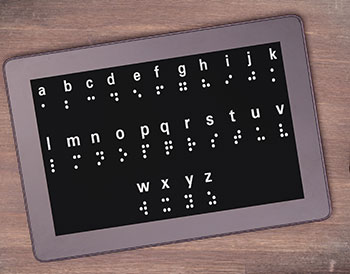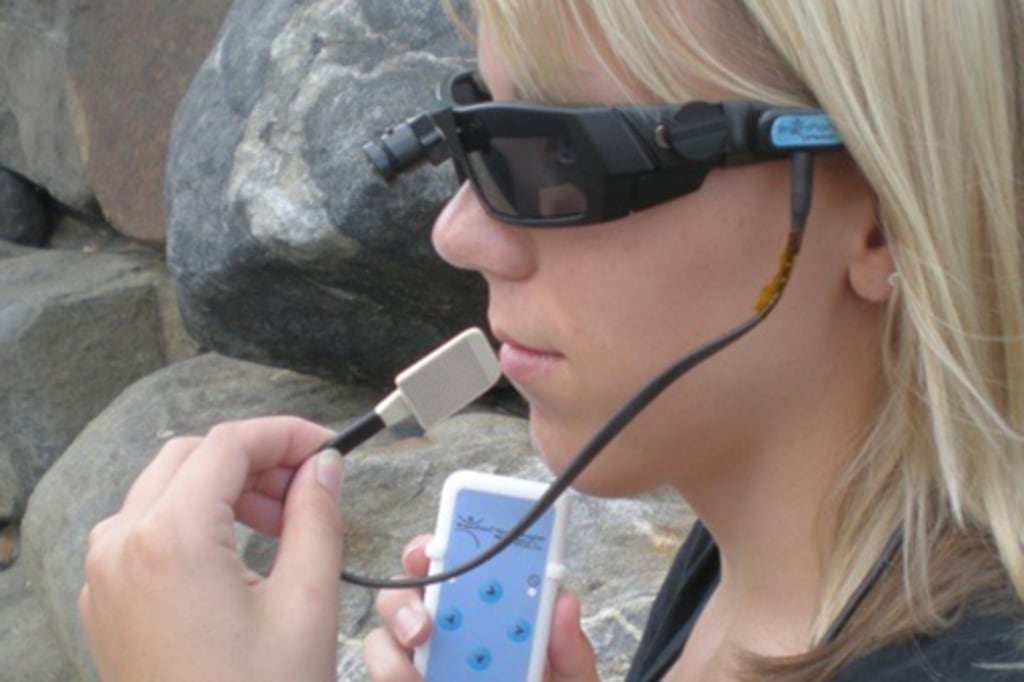Enhancing Lives With Advanced Assistive Tools for the Blind
The integration of sophisticated assistive tools for the blind is transforming exactly how people experience their environments and connect with their areas. What does this development mean for the future of assistive innovation and its role in empowering people?
Overview of Assistive Tools
Assistive devices for the blind incorporate a varied variety of devices and technologies designed to enhance freedom and enhance the quality of life for people with visual impairments. These gadgets accommodate various demands, from navigating and flexibility to communication and daily job administration.
Among the primary groups of assistive gadgets includes movement aids, such as white canes and overview canines, which assist customers browse their environments securely. Digital travel help, outfitted with sensing units and audio responses, additionally play a considerable role in flexibility enhancement.
Furthermore, tools that help with day-to-day living activities, such as adaptive cooking area tools, Braille labels, and talking watches, encourage individuals to do jobs individually. Communication help, including screen readers and Braille displays, help with accessibility to information and enable individuals to engage efficiently with the electronic world.
Furthermore, low-tech services like amplifying glasses and large-print products continue to be essential for many users. Collectively, these assistive gadgets offer not only as useful tools yet additionally as important enablers of autonomy, fostering greater engagement in a world that commonly prioritizes sighted experiences. Their combination right into life is vital for advertising inclusivity and boosting overall wellness for those with visual problems.
Ingenious Technologies being used
Development in innovation has considerably changed the landscape of tools offered for people with visual problems. Among the most significant developments are wise glasses incorporated with augmented fact, which offer real-time navigation support and things acknowledgment. These gadgets take advantage of advanced cameras and expert system to provide auditory signs, boosting the individual's spatial recognition and autonomy.
In addition, mobile applications have become effective sources, enabling customers to determine currency, read text out loud, and browse strange environments with spoken instructions. Devices such as Braille displays and refreshable Braille tools continue to develop, offering smooth connection with smart devices and computers, thus improving communication and accessibility to details.
Wearable technology, including smartwatches outfitted with voice-activated features, better empowers users by helping with fast accessibility to notices and alerts without calling for aesthetic involvement. Tactile maps and 3D printing are additionally acquiring grip, providing concrete depictions of areas that help in positioning and movement training.
Jointly, these innovative modern technologies not only improve the day-to-days live of visually damaged individuals yet likewise foster better freedom, inclusivity, and involvement with the wider neighborhood, consequently improving assumptions of access. (Smart glasses for the visually impaired)
Personal Stories of Empowerment
Empowerment frequently emerges from individual experiences that highlight the transformative influence of modern technology on individuals with visual disabilities. Take, as an example, the tale of Sarah, a young musician that restored her enthusiasm for paint with the use of a wise walking cane outfitted with barrier discovery. This device not only facilitated her movement however instilled a newly found self-confidence, permitting her to navigate public spaces separately and pursue her creative endeavors.

These narratives emphasize the extensive impacts that advanced assistive gadgets can have on daily life. By enabling people to get over barriers, innovation promotes a sense of freedom and self-worth. Such empowerment stories offer as a testament to the potential of advancement, illustrating exactly how the right devices can considerably enhance lifestyle and open doors to new opportunities for those with visual disabilities.
Benefits of Advanced Solutions
Just how can progressed solutions fundamentally improve the lives of people with visual problems? The combination of cutting-edge technology into assistive tools significantly changes day-to-day experiences for those influenced by vision loss. These advanced remedies supply unprecedented autonomy, enabling users to navigate their atmospheres with confidence. Devices such as clever canes outfitted with sensors, navigating apps, and wearable innovation are designed to provide real-time responses, improving spatial recognition and lowering the dangers related to flexibility.
Moreover, progressed assistive modern technologies foster social inclusion by facilitating communication and communication. Voice-activated tools and applications enable individuals to access info and involve with their surroundings separately, damaging barriers that formerly impeded their engagement in instructional, specialist, and social setups.
Additionally, the customization and adaptability of these options cater to the varied demands of users, thus check improving their overall lifestyle. Boosted functionality, such as item recognition and text-to-speech capacities, equips individuals with aesthetic disabilities to perform tasks that they might have as soon as located testing. Inevitably, progressed assistive modern technologies not just improve freedom and safety yet additionally advertise self-respect and self-regard, allowing individuals to lead fulfilling lives.
Future Fads in Assistive Technology
As modern technology remains to evolve, the landscape of assistive gadgets for the blind is positioned for amazing advancements that will certainly additionally boost availability and self-reliance. Arising trends in assistive innovation indicate a change towards enhanced combination of man-made knowledge (AI) and machine learning, making it possible for tools to adjust to private user requires in real-time. These technologies are anticipated to promote more user-friendly navigation systems that can determine challenges and offer audio comments, dramatically boosting outside movement.
Additionally, the development of wearable tech, such as clever glasses equipped with enhanced truth, will enable individuals to receive contextual info regarding their surroundings, consequently enriching their spatial understanding. Advancements in haptic innovation assurance to develop tactile responses gadgets, allowing individuals to regard info with touch, boosting knowing and communication with their atmosphere.
Telecommunication advancements are likewise paving the way for remote assistance solutions, where experienced experts can give advice by means of websites video phone calls, ensuring assistance is conveniently available. As these patterns unravel, the future of assistive tools for the blind will undoubtedly promote higher freedom, equipping people to browse their globe with confidence and ease.

Verdict
The integration of innovative assistive devices for the blind represents a significant advancement in promoting independence and improving high quality of life. By making use of cutting-edge innovations, these devices empower users to browse their environments with higher confidence and autonomy. As the field remains to progress, continuous r & d will likely generate much more innovative services, even more changing the lived experiences of people with aesthetic disabilities and promoting a higher sense of incorporation within society.
The assimilation of innovative assistive devices for the blind is transforming exactly how people experience their environments and interact with their neighborhoods. The combination of sophisticated modern technology right into assistive gadgets dramatically changes everyday experiences for those influenced by vision loss.As technology continues to evolve, the landscape of assistive devices for the blind is positioned for exceptional developments that will further boost access and independence. Emerging patterns in assistive modern technology suggest a shift toward increased integration of artificial knowledge (AI) and equipment discovering, allowing tools to adjust to private customer requires in real-time.The assimilation of sophisticated assistive devices for the blind represents Find Out More a considerable development in cultivating independence and improving top quality of life.